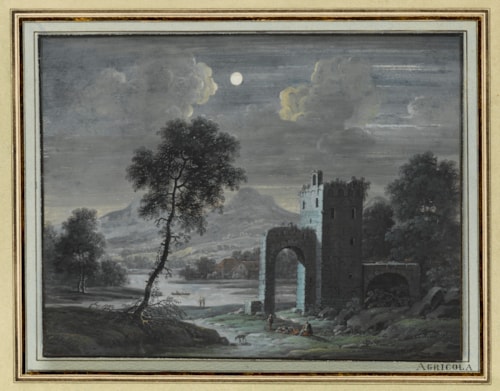
Christoph Ludwig AGRICOLA
Regensburg 1667 - Regensburg 1719
Biography
Relatively little is known of the artistic training and career of the late 17th century German painter Christoph Ludwig Agricola, who developed a form of atmospheric landscape painting that has been described as embodying ‘an early expression of Baroque Romanticism in German painting.’ He seems to have been largely self-taught, and his work was strongly influenced by the landscape paintings of the French artists Claude Lorraine, Gaspard Dughet and Nicolas Poussin. The compositions of his easel pictures favoured landscapes with unusual light effects, such as twilight or nighttime scenes, or the darkness of the sky before a storm. Agricola was active mainly in Augsburg, and also spent time in England, Holland, France and Italy, particularly in Rome and Naples, where he lived for some time. Around 1712 he worked in Venice, where he painted several works for Zaccaria Sagredo. As a draughtsman, Agricola also produced a significant number of gouaches of natural history subjects, notably a series of fine studies of birds, executed on vellum. Among his pupils was the landscape painter Johann Alexander Thiele. Paintings by Agricola are today in several German museums, notably in Braunschweig, Kassel and Schwerin, as well as in the Palazzo Pitti in Florence and museums in Naples, Turin and Bologna; the result of his years of working in Italy.



